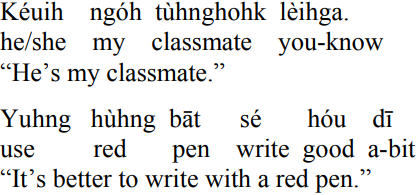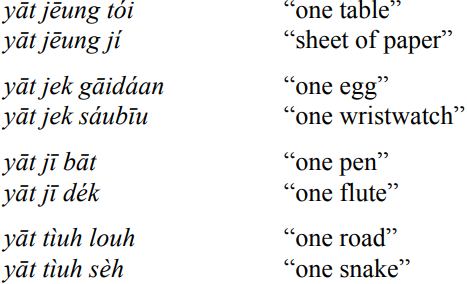


 Grammar
Grammar
 Tenses
Tenses
 Present
Present
 Past
Past
 Future
Future
 Parts Of Speech
Parts Of Speech
 Nouns
Nouns
 Verbs
Verbs
 Adverbs
Adverbs
 Adjectives
Adjectives
 Pronouns
Pronouns
 Pre Position
Pre Position
 Preposition by function
Preposition by function 
 Preposition by construction
Preposition by construction
 Conjunctions
Conjunctions
 Interjections
Interjections
 Grammar Rules
Grammar Rules
 Linguistics
Linguistics
 Semantics
Semantics
 Pragmatics
Pragmatics
 Reading Comprehension
Reading Comprehension|
Read More
Date: 2024-01-09
Date: 2024-01-20
Date: 2024-01-09
|
East and Southeast Asia
A. This area actually contains several families. The main three are Sino-Tibetan, which includes Chinese, Tibetan, and Burmese; Tai-Kadai, which includes Thai and Laotian; and Austroasiatic, which includes Vietnamese and Khmer.
B. Heavy reliance on context. These languages stand out in being especially telegraphic compared to most languages. It is natural to suppose that a “normal” language has separate words for he and she, or words for a and the, or must always express pronominal concepts, such as “I” and “you,” either with a word or with the endings that we learn in Spanish. But Cantonese goes against all of these notions, as do most languages in this area. Notice also how differently Cantonese puts a thought together than English does.

C. Particles. Thus, an English speaker thinks of a and the and he and she as crucial things to mark in a language. But there are things that an English speaker would not conceive of as “grammar” that speakers of these languages do. For example, where we would say “This machine’s very reliable” in a tone of voice objecting to someone denying this, in Cantonese the assertive attitude that this tone of voice conveys is also marked with a particle at the end of the sentence:

In the same way, if someone asked us why we weren’t sleeping and we answered “It’s too noisy,” we leave it to context that we are saying this in response to a situation going on at that time. But in Cantonese, this is actually “said,” with a particle that conveys immediate relevance:

You can even combine particles like this. In this sentence, the person is both asserting and speaking of something immediately relevant; therefore, ge and la are used together.

“All I want is for Vincent to be good to me.”
Cantonese has about 30 particles like this, marking attitudes that English often leaves to context or conveys with intonation. There were particles in the first Cantonese examples we saw earlier.
D. Classifiers. Instead of marking nouns with articles as in English, languages in this area use classifiers with nouns according to their shape, especially with numbers. This practice is similar to using such English expressions as two head of cattle, but these languages use this kind of construction regularly.

Cantonese uses jēung with flat objects, such as tables and paper; jek with round objects; jī with cylindrical objects; tìuh with long, thin objects; and so on. There are dozens of these words.
|
|
|
|
5 علامات تحذيرية قد تدل على "مشكل خطير" في الكبد
|
|
|
|
|
|
|
تستخدم لأول مرة... مستشفى الإمام زين العابدين (ع) التابع للعتبة الحسينية يعتمد تقنيات حديثة في تثبيت الكسور المعقدة
|
|
|